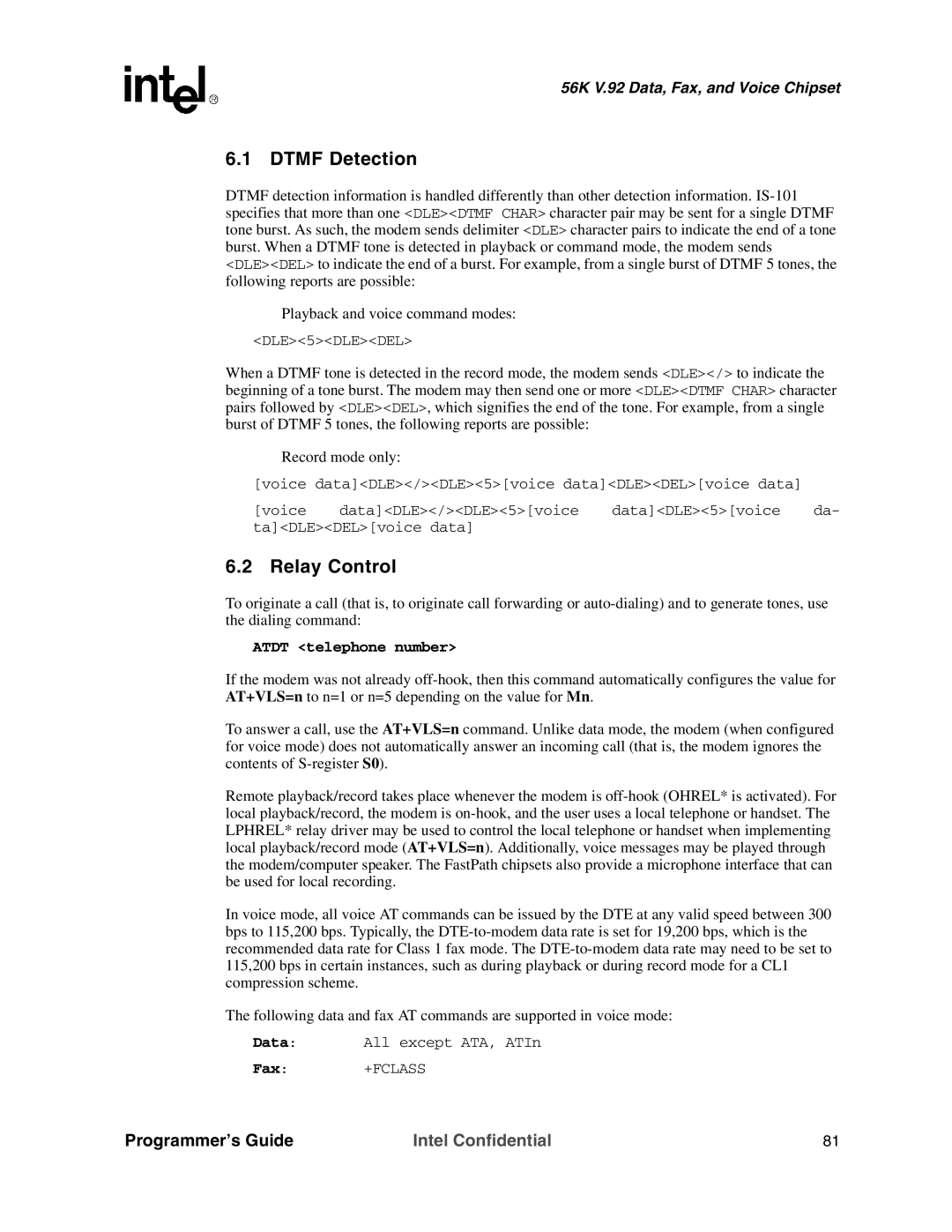56K V.92 Data, Fax, and Voice Chipset
6.1 DTMF Detection
DTMF detection information is handled differently than other detection information.
Playback and voice command modes:
<DLE><5><DLE><DEL>
When a DTMF tone is detected in the record mode, the modem sends <DLE></> to indicate the beginning of a tone burst. The modem may then send one or more <DLE><DTMF CHAR> character pairs followed by <DLE><DEL>, which signifies the end of the tone. For example, from a single burst of DTMF 5 tones, the following reports are possible:
Record mode only:
[voice data]<DLE></><DLE><5>[voice data]<DLE><DEL>[voice data]
[voice data]<DLE></><DLE><5>[voice data]<DLE><5>[voice da- ta]<DLE><DEL>[voice data]
6.2 Relay Control
To originate a call (that is, to originate call forwarding or
ATDT <telephone number>
If the modem was not already
To answer a call, use the AT+VLS=n command. Unlike data mode, the modem (when configured for voice mode) does not automatically answer an incoming call (that is, the modem ignores the contents of
Remote playback/record takes place whenever the modem is
In voice mode, all voice AT commands can be issued by the DTE at any valid speed between 300 bps to 115,200 bps. Typically, the
The following data and fax AT commands are supported in voice mode:
Data: All except ATA, ATIn
Fax: +FCLASS
Programmer’s Guide | Intel Confidential | 81 |
